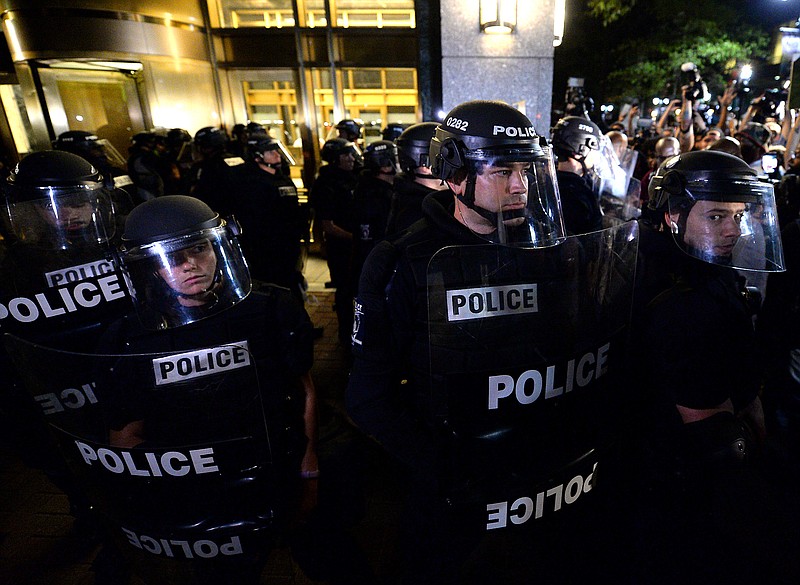Another set of black men killed by the police - one in Tulsa, Okla., another in Charlotte, N.C.
Another set of protests, and even some rioting.
Another television cycle in which the pornography of black death, pain and anguish are exploited for visual sensation and ratings gold.
And yes, another moment of mistakenly focusing on individual cases and individual motives and individual protests instead of recognizing that what we are witnessing in a wave of actions rippling across the country is an exhaling of cumulative cultural injury and a frantic attempt to stanch the bleeding from multiplying wounds.
We can no longer afford to buy into the delusion that this moment of turmoil is about discrete cases or their specific disposition under the law. The system of justice itself is under interrogation. The cultural mechanisms that produced that system are under interrogation. America as a whole is under interrogation.
This is a video age, in which facts that were previously filtered though police accounts and media sources, that were previously whispered over shoulders at barbershops and across kitchen tables, have been buttressed by the immediacy and veracity of visual proof.
It is an age in which the language of resistance has been set and accepted, in which the mode of expression and resistance has been demonstrated and proved effective. It is an age of enlightenment and anger, of fear and frustration, of activism and alertness. Black America is beyond the breaking point, a point of no return.
This moment is about the way historical policies created our modern American ghettos and their concentrated poverty; the ways in which such concentrated poverty and its blight and hopelessness can be a prime breeding ground for criminal behavior; the way these areas make poverty sticky and opportunity scarce; the way resources, from education to health care to nutrition, are limited in these areas.
We keep talking about choices, but we don't talk nearly enough about the fact that choices are always made within a cultural and historical context.
People didn't simply choose to live in neighborhoods with poor housing and poor schools and crumbling infrastructure and few grocery stores and fewer adequate health care facilities. There were many factors that created those neighborhoods: white flight, and the black flight of wealthier black people, community disinvestment, business lending practices and government policies assigning infrastructure and public transportation to certain parts of cities and not others.
And the people living in those communities - sometimes trapped in those communities - make choices, sometimes poor ones, within that context.
We may say that a poor choice is simply wrong and the offending party must deal with the consequences. But poor choices made in a poor environment don't have the same consequences as those made in wealthy environments. For poor people, the same poor choices are punished more often and more severely, compounding their deficit.
Then America takes it further, imputing the poor choices of a few onto a whole race, and in so doing sets the stage for disaster. This creates the suspicion and fear that can lead to the deaths we're seeing.
This is what people mean when they talk about the impact of systemic racism in these cases and in these areas. It is not that the police harbor more racism than the rest of America, but rather that racism across society, including within our police departments and system of justice, has been erected in ways that disproportionately affect poor, minority communities. That is acutely clear in these killings.
What took centuries to grow may take a long time to fully chop down. You can't fight racism by plucking leaves from the top of the poisonous tree, but by taking an ax to the root.
The police are simply instruments of the state, and the state is the people who comprise it. The police are articulating a campaign of control and containment of populations and that campaign has the implicit approval of every citizen within their jurisdictions. This is not a rogue officer problem; this is a rogue society problem.
The New York Times
